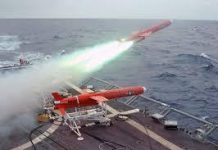
Amid rising global tensions and the growing influence of drones and artificial intelligence on modern warfare, the 2025 DSEI UK exhibition in London will spotlight the cutting-edge technologies redefining the battlefield.
According to retired Air Vice-Marshal Gary Waterfall, the event’s senior military adviser, this year’s focus is on ensuring that nations such as the U.K. are fully prepared for the rapidly changing nature of conflict. He noted that unconventional warfare has surged over the past year—ranging from cyberattacks and information warfare to the deployment of unmanned systems across air, land, and sea. Drone and counter-drone innovations, in particular, have seen a “dramatic increase.”
Waterfall, who worked with the U.K. Ministry of Defence to shape the show’s core theme, “Preparing the Future Force,” emphasized the urgency of adapting to these changes. “We’re in the middle of a technological revolution,” he said. “Innovation is moving at a remarkable pace, and militaries must adapt quickly if they want to stay relevant.”
This year’s DSEI will be the largest to date, with 654 new exhibitors and representatives from over 45 countries. The four-day event opens on Tuesday, September 9, and will feature an expanded technology zone. Countries such as Czechia and Lithuania will have an increased presence, alongside more exhibitors from the U.S. and Canada.
Waterfall stressed that “future-proofing” defense goes beyond weapons upgrades. It requires rethinking the entire defense ecosystem—from industrial production and logistics to long-term readiness. “You can have the most capable force, but if your supply chain lacks depth and resilience, it won’t sustain operations for long,” he warned.
He also underscored the role of small and medium-sized enterprises (SMEs) in driving innovation, often outpacing major defense contractors. Examples include Formula One spin-offs applying AI and machine learning expertise to defense applications. Such companies will share space in the tech zone with larger players like Hadean and Palantir. “Solutions don’t always come from the primes,” Waterfall noted. “SMEs bring agility and fresh thinking that are vital to meeting new challenges.”
The show will be framed around three sub-themes:
- Securing Advantage: strengthening supply chains and agile procurement, since even advanced forces falter without logistical resilience.
- Driving Advantage: harnessing AI, cybersecurity, and data analytics to accelerate decision-making without replacing human judgment. “The key is to decide and act faster than potential adversaries,” said Waterfall.
- Maintaining Advantage: tackling the workforce challenge. With defense competing in a tight job market, attracting talent is no simple task.
To address this, the final day of DSEI will spotlight the next generation of defense professionals through university teams, apprenticeships, and discussions with military leaders on career opportunities in the sector.
Waterfall believes this human element is as critical as the technology on display. “The workforce challenge is arguably a bigger strategic hurdle than strengthening the defense industrial base,” he concluded. Skilled professionals will be essential to guiding AI and machine learning responsibly and ensuring that technology is applied effectively.





